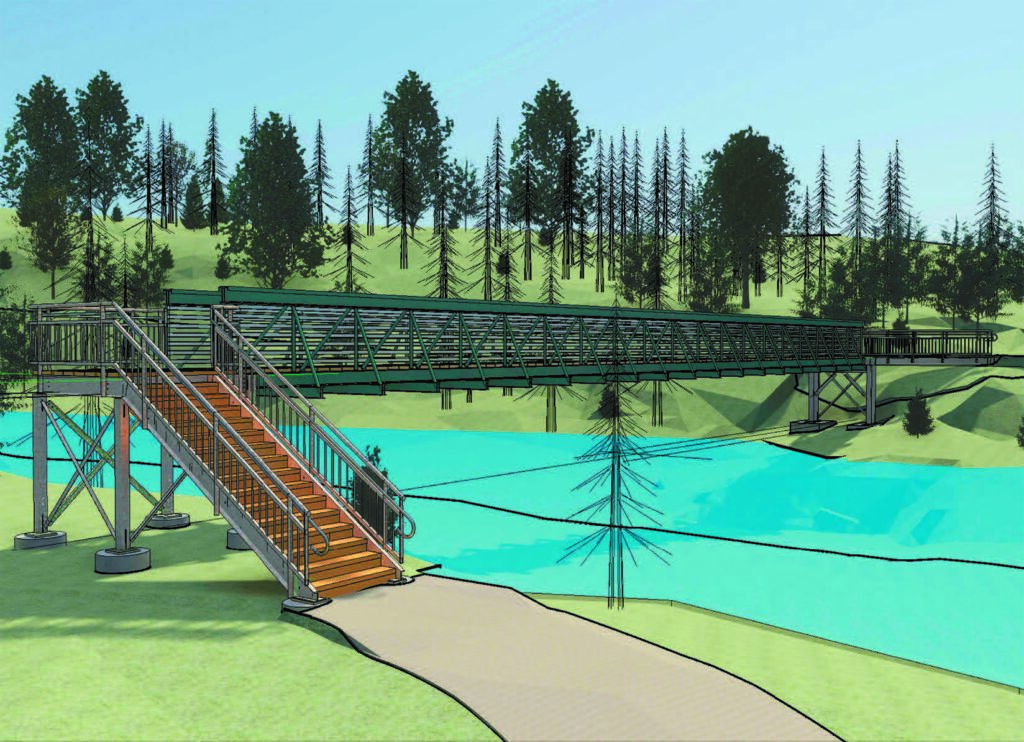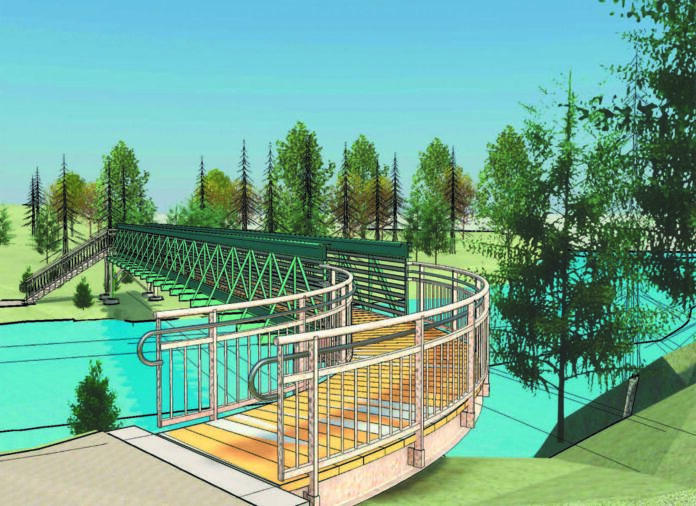Work to replace the High Falls pedestrian bridge is underway at Tettegouche State Park, and several trail closures and detours will be visible near the construction site. High Falls is often cited as the highest waterfall entirely within Minnesota. The falls and bridge are a popular attraction on the North Shore. They can be accessed via a hiking trail from the Tettegouche State Park visitor center.
Crews began working on a temporary access trail in late February and will start bridge construction on June 30, 2025. The project is expected to be completed before the end of this year.
The new bridge, spanning over 100 feet, will be made from reinforced fiberglass polymer, a durable material designed to better withstand the elements and future flooding events. Its length and height have increased to ensure the new bridge will be secure in flood situations. Northland Constructors from Duluth is the lead contractor, and the total cost for the project is a bit over $1 million.

Record flooding in the Spring of 2022 seriously damaged the existing steel suspension bridge, which has been closed to the public since then. While planning and engineering a replacement proceeded, flooding from a storm in June of 2024 dislodged the bridge from its moorings.
Park Manager Katie Foshay reports that specific amenities will be closed in the park to serve as staging and access areas for contractors. These include the High Falls trailhead parking lot, adjacent nature play area, the group camp, and multiple hiking trails on the west side of the river leading to the bridge. Some sections of the Superior Hiking Trail will be detoured slightly to ensure safety and minimize interactions with construction equipment.
In the interest of public safety, Katie encourages visitors to follow closure signage and stay out of the construction site.
The recent storms that hit the North Shore with drenching rain and gale-force winds on May 15 caused additional damage to Tettegouche. On the day Katie was contacted about this story, she was expecting the arrival of 20 workers from along the shore to do the cleanup. “We’re very grateful for the help,” Katie said.
Nestled along Minnesota’s rugged North Shore, Tettegouche State Park is a jewel in the Minnesota State Park system, renowned for dramatic cliffs, cascading waterfalls, and pristine inland lakes.
The modern history of Tettegouche begins with the arrival of aggressive logging operations around 1895. The Alger-Smith Lumber Company established logging camps to harvest the abundant virgin white and Norway pine. The area was heavily logged for about a decade, drastically altering the landscape from its old-growth grandeur.
In 1910, after the timber was largely depleted, the Alger-Smith Company sold the cutover land to a group of Duluth businessmen. This group formed the Tettegouche Club, transforming the area into a private fishing and hunting retreat. The club built several rustic log buildings, including a lodge and cabins.
The Tettegouche Club eventually disbanded, and in 1921, Clement Quinn, one of its members, purchased the entire property. Quinn was a dedicated steward of the land, protecting it from further development for fifty years. He continued to use it as a private retreat until 1971, when he sold the land to the deLaittres family who shared Quinn’s commitment to the land’s preservation and soon began discussions with conservation groups about its future, in the 1970s. The Nature Conservancy, a prominent land conservation organization, was crucial in acquiring the property from the deLaittres family. Working alongside other concerned individuals and groups, the Nature Conservancy facilitated the transfer of ownership to the State of Minnesota.
On June 29, 1979, legislation was enacted in St. Paul, officially establishing Tettegouche State Park. The park’s creation was a significant victory for conservation, safeguarding nearly 9,400 acres of spectacular shoreline, inland forests, and pristine waterways for public enjoyment and ecological protection.
The DNR website, https://www.dnr.state.mn.us/, is where you can find current alerts and notices from Tettegouche about the bridge project and the status of trails.





